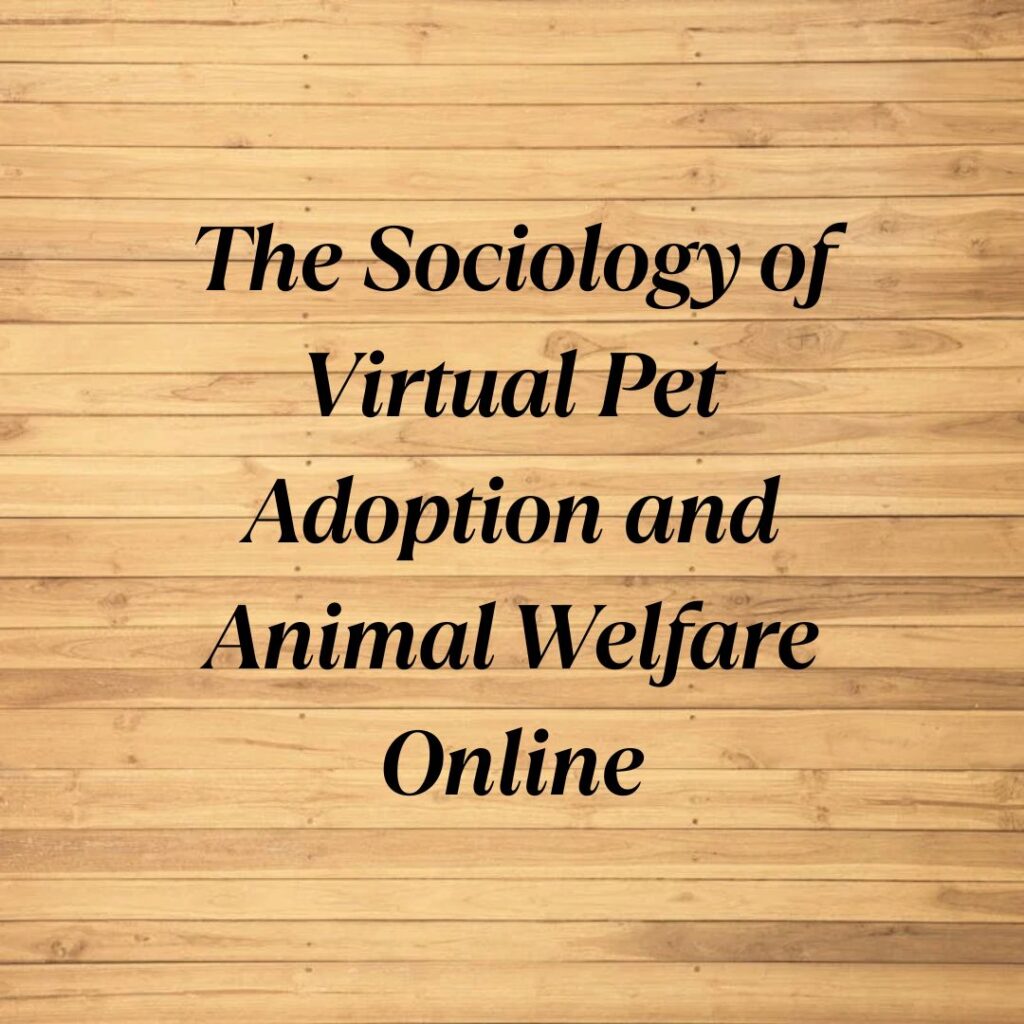In recent years, the landscape of pet adoption has expanded beyond physical shelters to encompass virtual platforms, reflecting broader societal shifts in how we connect, care for, and perceive animals. This phenomenon not only highlights our evolving relationship with pets but also underscores the intersection of technology, empathy, and community in the digital age.
Evolution of Virtual Pet Adoption
Virtual pet adoption platforms have emerged as accessible avenues for individuals to find and adopt pets online. Websites and mobile apps dedicated to pet adoption offer a virtual marketplace where prospective pet owners can browse profiles, learn about available animals, and even interact remotely before making a commitment. This virtualization of the adoption process has democratized access to pet ownership, breaking down geographical barriers and providing a wider pool of animals in need of homes.
One notable example is Petfinder, a pioneering online resource that connects potential adopters with animal shelters and rescue organizations across North America. Since its inception in 1996, Petfinder has facilitated millions of adoptions, demonstrating the power of technology in fostering human-animal bonds and promoting animal welfare.
Social Dynamics and Community Engagement
The shift towards virtual pet adoption also reflects broader social dynamics and community engagement online. Social media platforms play a crucial role in amplifying adoption stories, advocating for animal rights, and mobilizing support for rescue efforts. Campaigns such as #AdoptDontShop have gained traction on platforms like Instagram and Twitter, encouraging followers to consider adoption over purchasing pets from commercial breeders.
These online communities not only raise awareness about the importance of animal welfare but also foster a sense of belonging among pet owners and animal advocates. Discussions on virtual forums and social media groups often center around shared experiences, pet care tips, and advocacy initiatives, creating virtual communities bonded by a common love for animals.
Technological Innovations and Impact
Advancements in technology have further transformed the landscape of virtual pet adoption and animal welfare online. Virtual reality (VR) and augmented reality (AR) applications, for instance, allow prospective pet owners to virtually interact with shelter animals, providing a more immersive adoption experience. This technological integration enhances empathy and emotional connection, potentially increasing adoption rates and reducing the number of animals in shelters.
Moreover, artificial intelligence (AI) and machine learning algorithms are being leveraged to streamline the matching process between pets and adopters based on compatibility factors such as lifestyle, preferences, and behavioral traits. These innovations not only optimize the adoption process but also contribute to the overall well-being and happiness of both pets and their owners.
Ethical Considerations and Challenges
Despite its benefits, the rise of virtual pet adoption also presents ethical considerations and challenges. The digital platform may inadvertently prioritize aesthetics and convenience over the holistic needs of animals, perpetuating a consumerist approach to pet ownership. Furthermore, concerns about the authenticity and transparency of online pet profiles raise questions about responsible adoption practices and the ethical sourcing of animals.
Moreover, the digital divide remains a significant barrier for individuals with limited access to technology, potentially excluding them from participating in virtual adoption processes. Addressing these disparities requires a multifaceted approach that combines technological innovation with ethical considerations and inclusive outreach efforts.
Conclusion: Bridging Digital and Emotional Landscapes
In conclusion, the sociology of virtual pet adoption and animal welfare online exemplifies the evolving relationship between humans and animals in the digital era. By leveraging technology to facilitate adoption, raise awareness, and build communities, virtual platforms have reshaped traditional norms of pet ownership and advocacy. However, navigating ethical challenges and promoting inclusivity remain crucial in ensuring the welfare and ethical treatment of animals in online adoption practices.
As we continue to navigate the intersection of technology, empathy, and community in pet adoption, fostering meaningful connections and prioritizing animal welfare should remain at the forefront of our efforts. Ultimately, the evolution of virtual pet adoption reflects not only our technological advancements but also our collective responsibility towards creating a more compassionate and inclusive society for all beings.
This comprehensive exploration underscores the significance of virtual pet adoption as more than just a transactional process but as a reflection of our evolving societal values and commitments towards animal welfare in the digital age.








One Response
Loved the insights on virtual adoptions bridging empathy gaps in society.